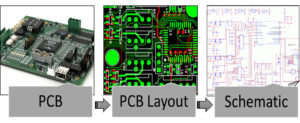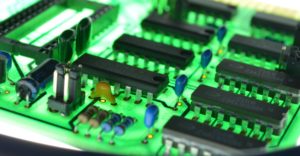The Reverse Engineering PCB Card Primary Objectiveis the development of unrestricted technical data such as the layout drawing, gerber file, list of component and schematic diagram, adequate for competitive procurement, through engineering evaluations of existing PCB Card. The nominal PCB Card reverse engineering process is depicted in below Figure. Detailed procedures are described in Subsections 5.2 through 5.43.

PCB Card reverse engineering process
In Process Reviews (IPRs) should be performed at the end of each principal phase of the PCB Card reverse engineering process to assure compliance to the process and to evaluate the need for continuing reverse engineering on the item.
a, Functional/economic analysis should be completed to collect available documentation, determine missing data requirements, determine testing requirements, and develop the Reverse Engineering PCB Card Cost-Estimates and Schedules;
b, A disassembly procedure should be completed for each candidate to ensure functional integrity is maintained to allow for a viable analysis and documentation;
d, A PCB Card analysis should be performed to develop the missing data required for Level 3 drawings;
e, Level 3 drawings are the result of the reverse engineering process and contain the documented parameters necessary to reproduce the selected candidate;
g, A production review should be performed to determine the economics of production of the reverse engineered item;
h, Prototype production involves the manufacture and testing of prototypes to determine if they meet all required specifications; and
i, A finalized TDP should be formulated and delivered to the Government/Tasking Agency requesting the reverse engineering of the candidate item.

 f,
f, 




